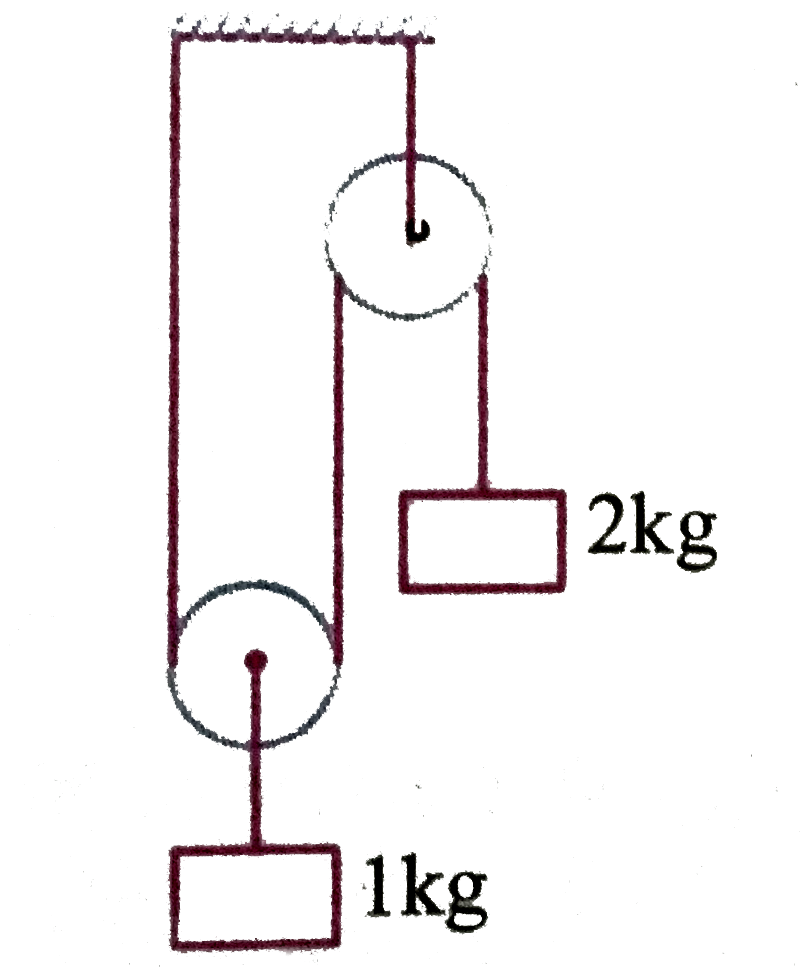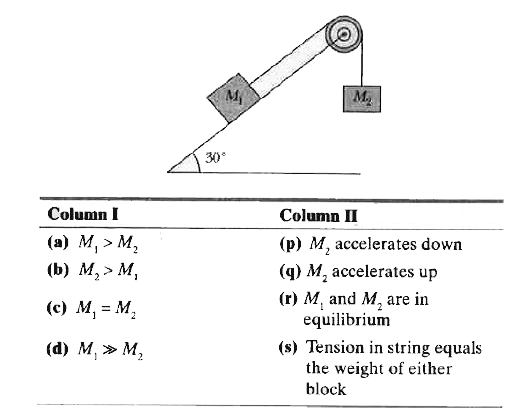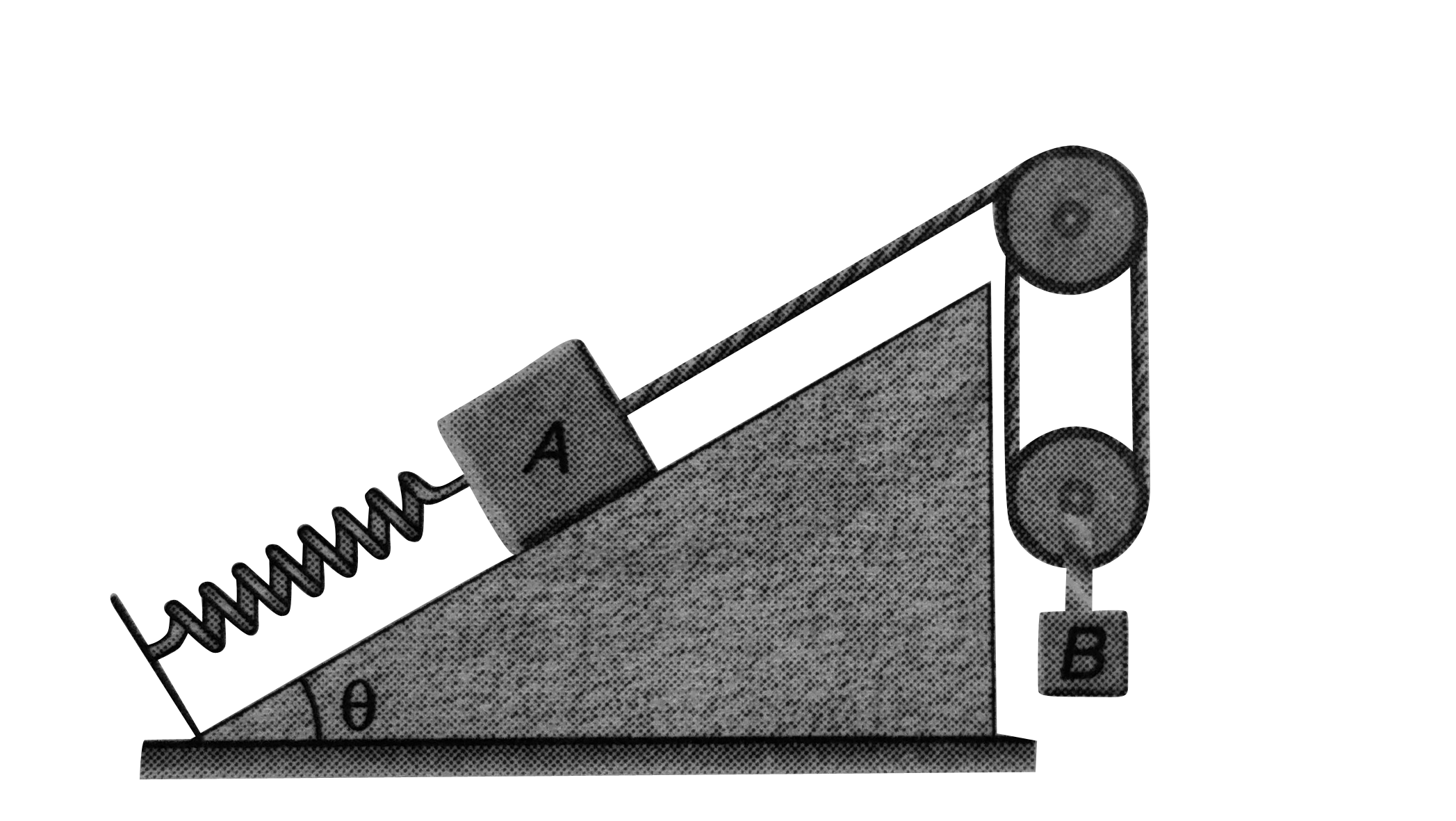Find the natural frequency of the system shown in figure. The pulleys are smooth and massless.
If the mass M is displaced by x from its mean position each spring further stretches by 2x. Net restoring force
Related Solutions
Find the natural frequency of the system shown in figure. The pulleys are smooth and massless.
View SolutionFind the natural frequency of the system shown in figure. The pulleys are smooth and massless.
View SolutionFind the natural frequency of the system shown in figure. The pulleys are smooth and massless.
View SolutionFind the natural frequency of oscillation of the system as shown in figure. Pulleys are massless and frictionless. Spring and string are also massless. (Take pi^(2)=10 )
View SolutionFind the natural frequency of oscillation of the system as shown in figure. Pulleys are massless and frictionless. Spring and string are also massless. (Take pi^(2)=10 )
View SolutionIn the pulley-block system shown in figure, strings are light. Pulleys are massless and smooth. System is released from rest. In seconds.
 .
.
View SolutionFind the natural frequency of the system as shown in the figure. The pulleys are massless and frictionless.
(Take and )

View SolutionA block of mass 20 kg is set into motion on a frictionless horizontal surface with the help of massless smooth pulley and rope as shown in the figure. Find the acceleration of the pulley
_PHY_E05_192_Q05.png)
View SolutionA block of mass 20 kg is set into motion on a frictionless horizontal surface with the help of massless smooth pulley and rope as shown in the figure. Find the acceleration of the pulley
View SolutionIn the arrangement shown in fig. pulleys are smooth and massless. Threads are massless and inextensible. Find acceleration of mass m_(1) .
View SolutionIn the figure, the massless and inextensible thread does not slip on the pulley. It is wound over pulley as shown. If the system is released from rest,
View SolutionFind the nature of the body shown in the picture. The arteries are smooth and massless.
View SolutionCalculate the natural angular frequency 'omega' of the system as shown in figure. The mass and friction of the pulleys are negligible
View SolutionIn the system shown in the given figure, the inline is frictionless, the string is massless, and inextensible pulley is light and frictionless. The system is released from rest.

View SolutionIn the diagram shown in figure ,all pulleys are smooth and massless and stings are light . Match the following
View SolutionIn the diagram shown in figure, all pulleys are smooth and massless and strings are light. Match the following (##AKS_TRG_AO_PHY_XI_V01_A_C05_E01_045_Q01.png" width="80%">
View SolutionCalculate the angular frequency of the system shown in figure. Friction is absent every where and the threads, spring and pulleys are massless. Given that

View SolutionCalculate the angular frequency of the system shown in figure. Friction is absent everywhere and the threads, spring and pulleys are massless. Given that .

View SolutionIn the system shown in the figure all surfaces are smooth, pulley and string are massless. The string between the two pulleys and between pulley and block of mass 5 m is parallel to the incline surface of the block of mass 4 m. The system is released from rest. Find the acceleration of the block of mass 4 m . ["tan" 37^(@) = (3)/(4)]
View SolutionIn the arrangement shown, inclined plane is smooth, strings and pulleys are massless. Find T_(1)/T_(2)
View Solution